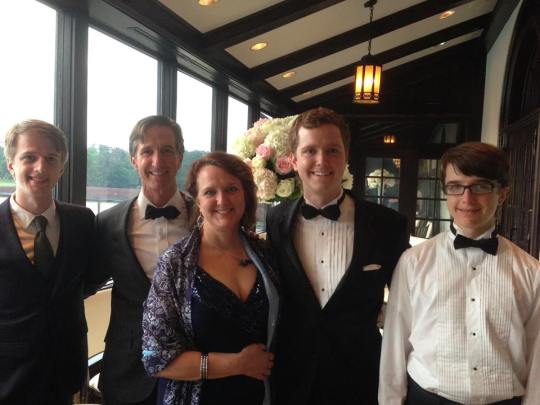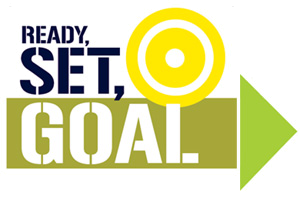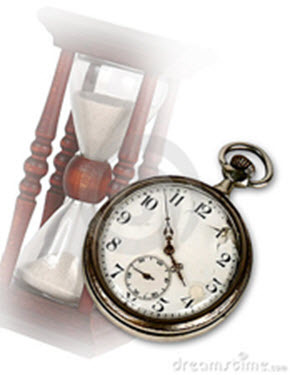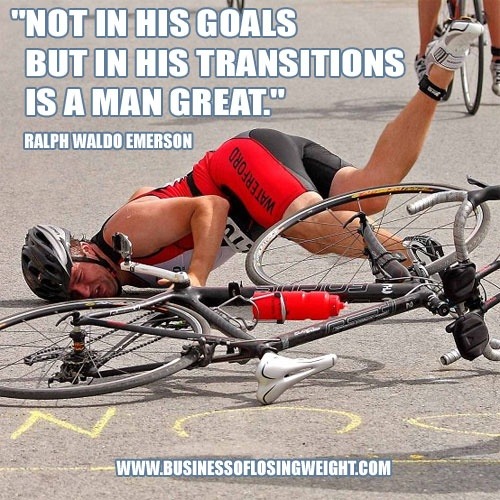By Casey Hannan
I’ve been at this multisport thing for over 10 years. These are the lessons I come back to, again and again, because they have and continue to be most helpful to me as an athlete and a coach. I hope they might be of help to you, too.
1. Begin and end with gratitude.
Gratitude helps me with two important aspects of the multisport life: (1) Pre-race nerves, and (2) the “it’s all about me” self-absorbed mental state in which the world revolves around me and my training and racing commitments (sound familiar?). When I can remember to begin and end each workout or race with gratitude, when I can remember to be grateful for my health, family, friends, athletic ability, job, and everything else that enables me to express myself through physical activity and competition, then I’ve already won. Gratitude helps me hit the reset button to remember what’s most important.
At the top of my gratitude list: My family.

The Hannan Family
2. Be clear on your goal, and own it.

In my opinion, the most defining characteristic of a good goal is that you can own it 110%; the details of said goal need only to be important to you. It doesn’t matter if the goal is to qualify for Kona or maintain a healthy weight. Own it! Remembering your goal is another way to hit the reset button and find clarity of purpose.
3. Be able to train and race without technology.
What happens when you show up on race day, or for your epic 6 hour brick workout, and your trusty GPS and/or power meter and/or heart rate monitor are not cooperating? If you’re dependence on technology translates into underdeveloped skills to train and race by feel, then you might be well-served to leave the technology behind on a few select workouts during the racing season, but the best time to unplug is when you’re logging base miles during the non-race season. Give it a try; it can be liberating.

4. Practice transitions.
My biggest race execution blunders have happened in transition. Anyone out there broken and dislocated a toe in transition? I have, so I practice in these 2 ways: (1) setting up a transition area on the driveway or lawn and practicing the swim-to-bike and bike-to-run transitions, 10 to 20 times in a row, so it feels as smooth, fast, and complete as possible. And, (2) once you’ve racked your bike at an event, walk or jog the path from “swim in” to your bike and then to “bike out”, and then from “bike in” to your transition area and then to “run out”. Try to do this twice before the race starts, and remember to count rows and/or sections of bike racks, light poles, trees, curbs, or any available landmark to help you locate your transition area from the two different directions (“swim in” and “bike in”).

5. Keep your self-talk positive.
Have you ever found yourself getting stressed about a big bike or run workout, to the point where you’re thinking things like “that ain’t going to be fun” or “it’s really going to suck”? Well, if that thinking carries over into the workout, it probably will suck and won’t be too much fun. To change the pattern of negative self-talk, we need to do two things: (1) develop awareness to catch ourselves when we do it, and (2) create new, more positive thoughts to replace the negative ones. Being mindful of our self-talk is a seemingly small but very important aspect of multisport life, because our thoughts can make
such a big difference. The key for each of us to find what positive thoughts are most self-authentic and the best times to employ them.



 SWIM
SWIM
 BIKES
BIKES
 APPAREL
APPAREL
 NUTRITION
NUTRITION
 COMPONENTS
COMPONENTS
 ACCESSORIES
ACCESSORIES
 Podium Multisports Blog
Podium Multisports Blog









